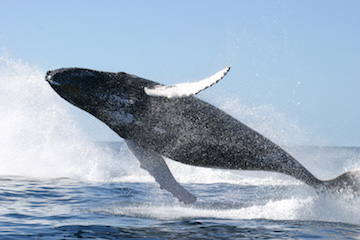Humpback_whale_jumping.jpg

Whales are among the largest and most graceful animals on the planet, while also being some of the most endangered. Photo Credit: National Oceanic and Atmospheric Administration
Whales are among the largest and most graceful animals on the planet. And they’re also among the most endangered. Although commercial whaling has been scaled back in recent decades, some countries still pursue these beautiful creatures.
And whales face many threats other than whaling. Ships and boats can run into whales, for example, and whales can accidentally be caught in fishing nets. They can be bothered by noise, or by people who are trying to view them up close. Some of these activities can kill the whales. Others can interfere with their hunting, breeding, or social activities.
To reduce the threat, several countries have created whale sanctuaries. One of the first was Australia, which established a sanctuary in 1999. It includes the waters out to a distance of 230 miles from the coastline of the Australian mainland, as well as several small islands scattered in the Indian, Pacific, and Southern oceans. The total area encompasses millions of square miles, making it one of the largest sanctuaries in the world.
Inside those waters, no one is allowed to kill or harm any cetaceans -- a group that includes whales, dolphins, and porpoises. The sanctuary’s waters include minke, right, and humpback whales, among others.
There have been disputes over the sanctuary, though. Australia has accused Japan of catching whales inside the sanctuary several times, for example. Still, the sanctuary is going a long way to protect whales and other cetaceans, helping rebuild shrinking populations.

